Marketing Strategy
The Sound of Success: The World of Sonic Branding

Embark on a journey through the engaging universe of sonic branding. In this piece, we’re going to explore the historical significance and effectiveness of leveraging music to forge brand identities and lasting impressions. From the evocative melodies of jingles to the profound resonance of sonic experiences, we’re set to reveal the intricacies involved in creating a distinct sonic identity for companies. Dive with us into the enthralling synergy between music and brand marketing, and learn how the influence of nostalgia marketing along with musical elements can dictate the evolution of a brand’s identity.
Key Takeaways:
- Sonic branding uses sound elements to create a unique identity for a brand.
- Music and jingles enhance brand recognition and forge emotional connections with consumers.
- Sonic branding evokes nostalgia, triggers memories, and targets specific audience demographics.
- Jingles create vivid memories and have a lasting impact on consumers.
- Music has a profound impact on memories and emotions, and can be used strategically in marketing.
Why do Jingles Create Vivid Memories?
Jingles have a remarkable ability to create vivid memories that stay with us long after we hear them. It’s no coincidence that jingles are catchy and have a repetitive nature. The combination of musical and lyrical elements makes them incredibly easy to remember and associate with a specific brand. These auditory triggers have a powerful effect on our memory, evoking nostalgia and bringing back vivid recollections of a particular time, place, or product.
When we hear a jingle that we associate with a brand, it can instantly transport us back to a specific moment in our lives. Whether it’s a childhood memory of watching television commercials or driving in the car with the radio on, jingles have a unique ability to elicit strong emotions and connect us to our past experiences.
Jingles are widely used in advertising for a reason—they create a strong emotional connection with consumers and significantly increase brand recognition. When a jingle becomes ingrained in our minds, it forms a lasting impression and strengthens the bond between the brand and its audience. We may find ourselves singing along to the jingle, even when we’re not consciously aware of doing so.
Furthermore, jingles are carefully crafted to appeal to our senses and leave a lasting impression. The melody and rhythm are designed to be pleasing to the ear and easy to hum or sing along with. The lyrics often contain key messages or brand attributes, reinforcing the brand’s identity in our minds.
So, the next time you find yourself humming a memorable tune from a commercial or a radio jingle, remember that it’s no accident. These jingles are carefully crafted to create vivid memories and forge powerful connections between brands and consumers.
How do Jingles Evoke Autobiographical Memories?
Jingles have the power to evoke autobiographical memories by creating an auditory trigger that is associated with specific personal experiences. When we hear a familiar jingle, it takes us back to a particular time and place, instantly transporting us to moments from our past. These memories can range from childhood moments to significant life events, and they are often accompanied by the emotions we felt during those times.
The aspects of music that play a significant role in triggering these memories include:
- Rhythm: The rhythm of a jingle can synchronize with our own internal rhythms, making it easier to recall associated memories.
- Melody: The melody of a jingle is catchy and memorable, making it easier for our brains to store and retrieve the information attached to it.
- Lyrics: The lyrics of a jingle often contain key phrases or hooks that become embedded in our memory, triggering recollection when we hear them again.
Nostalgia marketing leverages the power of jingles by using familiar tunes from the past to create a sense of familiarity and emotional connection with consumers. By tapping into our personal memories and emotions, brands can establish a deep rapport with their target audience and build brand loyalty.
Neuroscience studies have shown that music, including jingles, has a profound impact on memory processing. When we hear a jingle, it activates the hippocampus, a region of the brain associated with memory encoding and retrieval. This activation enhances our ability to recall associated memories and creates a strong link between the jingle and the brand it represents.

What Aspects of Music Affect Auditory Trigger?
How Does Nostalgia Marketing Work So Well with Jingles?
What Neuroscience Studies Say about the Impact of Jingles on Recollection?
Modern Marketing: The Power of Sonic Branding
In today’s ever-evolving marketing landscape, brands and agencies are harnessing the power of sonic branding to captivate audiences and create lasting impressions. Sonic branding, with its strategic use of sound elements, has become a potent tool that drives consumer engagement and brand recognition.
One key aspect of sonic branding is music listening. Research has shown that music has a profound impact on the cortex, the region of the brain responsible for processing sensory information. When we listen to music, various areas of the cortex are stimulated, eliciting emotional responses and significantly influencing our perception of brands and advertisements.

How Does Music Listening Affect the Cortex?
Music has the power to spark emotions, trigger memories, and influence decision-making processes. When we listen to music, it activates the auditory cortex, allowing us to process and interpret the sounds we hear. Simultaneously, music also engages other areas of the brain, such as the limbic system, which is responsible for regulating emotions. This interconnected response in the cortex creates a memorable and immersive experience that leaves a lasting impression.
What Makes Nostalgia Marketing Work So Well, Especially with Millennials?
One of the driving forces behind the success of sonic branding is nostalgia marketing. Millennials, in particular, have a deep emotional connection to the music of their past. By strategically using nostalgic music in advertising campaigns, brands can tap into millennials’ fond memories and evoke powerful emotions. This emotional connection not only fosters brand loyalty but also drives engagement and resonance with this key demographic.
What Is the Role of Jingles in the Next Campaign for Brands and Agencies?
Jingles, with their catchy tunes and memorable lyrics, have long been a staple of sonic branding. In the next campaign, brands and agencies can continue to leverage the power of jingles to create a distinctive sonic identity. Jingles are an effective way to enhance brand recognition and create a lasting imprint in consumers’ minds. Whether it’s a jingle heard on the radio or a catchy tune in a TV commercial, these audio elements help create a unique brand experience for consumers.
How Pepsi Set the Benchmark for Sonic Branding in Modern Marketing?
When it comes to successful sonic branding, Pepsi has set the benchmark. The iconic jingles and memorable campaigns created by Pepsi have become synonymous with the brand. Through their innovative use of music and sound, Pepsi has forged a deep emotional connection with consumers, establishing a sonic identity that is instantly recognizable. Other brands can look to Pepsi as an inspiration and learn from their pioneering approach to sonic branding.
Understanding the Impact of Music on Memories and Emotions
Music has a profound impact on our memories and emotions. When music is playing, it has the power to stimulate strong emotions and enhance the recollection of past experiences. The combination of melodies, rhythms, and lyrics creates a powerful sensory experience that invokes deep emotional responses.
How Does Music Playing Stimulate Strong Emotions and Recollection?
Music has the ability to tap into our emotions and trigger strong, often nostalgic feelings. It has the power to transport us back to a specific moment in time and evoke vivid memories associated with that period. The emotional connection we feel while listening to music helps us recall specific events, people, and emotions from our past.
What Are the Key Areas of the Brain Triggered by Music?
Music engages key areas of the brain, including the limbic system and the auditory cortex. The limbic system, which includes the hippocampus and the amygdala, plays a crucial role in memory formation and emotional processing. When music is playing, these areas are activated, leading to enhanced memory recall and the experience of intense emotions. The auditory cortex processes the auditory information from music, allowing us to perceive and interpret the sounds.
Why Is Music That Was Popular during Our Youth So Effective in Nostalgia Marketing?

Music that was popular during our youth has a special place in our hearts and minds. It becomes intertwined with our personal experiences, forming a deep emotional connection. This nostalgia-inducing power of music makes it highly effective in nostalgia marketing. By using songs from a specific era, brands can tap into the emotions and memories associated with that time and create a sense of familiarity, resonating with their target audience on a deeper level.
How Can Music Be Used to Evoke Memories in Boomer and Millennial Audiences?
Music can be used strategically to evoke memories in both boomer and millennial audiences. For boomers, playing songs from their youth can transport them back to their formative years, bringing back memories and emotions associated with that time. For millennials, music from their childhood and teenage years can evoke a sense of nostalgia and trigger memories of shared experiences with friends and family. By selecting the right music, brands can tap into these generational experiences and create a strong emotional connection with their target audiences.
| Impact of Music | Memories and Emotions | Nostalgia Marketing |
|---|---|---|
| Stimulates strong emotions | Evoke vivid memories | Creates a sense of familiarity |
| Enhances recollection | Triggers specific emotions | Resonates on a deeper level |
| Engages key areas of the brain | Tap into personal experiences | Elicits a strong emotional connection |
| Effective in nostalgia marketing | Transportation to a specific moment in time | Creates a lasting emotional connection |
| Used to evoke memories in different generations | Music from youth creates an emotional bond | Taps into shared experiences |
Creating Sonic Identity: The Role of Music in Building Brands
Building a strong brand involves creating a unique sonic identity, and music plays a crucial role in this process. Brands and agencies can strategically use music to target their specific audience through sonic branding techniques. By carefully selecting melodies, lyrics, and emotional tones, brands can elicit strong emotions in their target audience, forming a connection that goes beyond visual elements.

How Can Brands and Agencies Use Music to Target Their Audience through Sonic Branding?
In order to effectively target their audience, brands and agencies must consider the demographics, preferences, and values of their target market. By understanding the characteristics of their audience, they can select music that resonates with their target demographic. Whether it’s a catchy jingle or a powerful soundtrack, the right music can capture attention and create a memorable sonic experience for the audience.
What Are the Key Aspects of Creating Music to Elicit Strong Emotions in the Target Audience?
When creating music to elicit strong emotions in the target audience, certain key aspects should be considered. The melody, rhythm, harmony, and lyrics all play a role in evoking specific emotional responses. By carefully crafting these elements, brands can create music that strikes a chord with their audience, amplifying the emotional impact and strengthening the brand connection.
Why Is It Essential for Brands to Understand the Psychology of Music in Making Music That Resonates?
The psychology of music plays a significant role in creating music that resonates with the audience. Different musical elements can evoke specific emotions and trigger memories, allowing brands to create a soulful connection with their target market. By understanding the psychological effects of different musical components, brands can tailor their sonic identity to align with the emotions and values they want to evoke in their audience.
What Role Does Music Therapy Play in Creating Sonic Identity for Brands?
Music therapy can be a powerful tool in creating a sonic identity for brands. By drawing on the therapeutic aspects of music, brands can create a positive emotional experience for consumers. Music therapy techniques, such as using specific genres or rhythms, can evoke emotions associated with well-being and happiness. By incorporating these elements into their sonic branding strategies, brands can enhance their overall brand experience and foster a deeper connection with their audience.
The Future of Sonic Branding: The Evolution of Music in Marketing
The future of sonic branding lies in the evolution of music in marketing. Brands have recognized the ability of music to elicit memories and emotions, and they continue to harness its power in the modern marketing landscape. The use of popular music plays a significant role in the evolution of sonic branding, as it proves highly effective in triggering autobiographical memories and forging strong connections with consumers.
With advancements in music-related technologies, brands are creating innovative sonic identities. Sound engineering, virtual reality, and interactive audio experiences are revolutionizing the way brands engage with their audience. These innovations allow for a more immersive and personalized sonic experience, enabling brands to leave a lasting impression and strengthen their brand recognition.
As music continues to evolve, it remains a vital tool for creating strong connections with consumers. Whether through streaming platforms, social media, or immersive live experiences, brands must adapt to these changes and leverage the evolving landscape to connect with their target audience. By staying at the forefront of music evolution, brands can create memorable brand experiences and build deeper emotional connections with their customers.
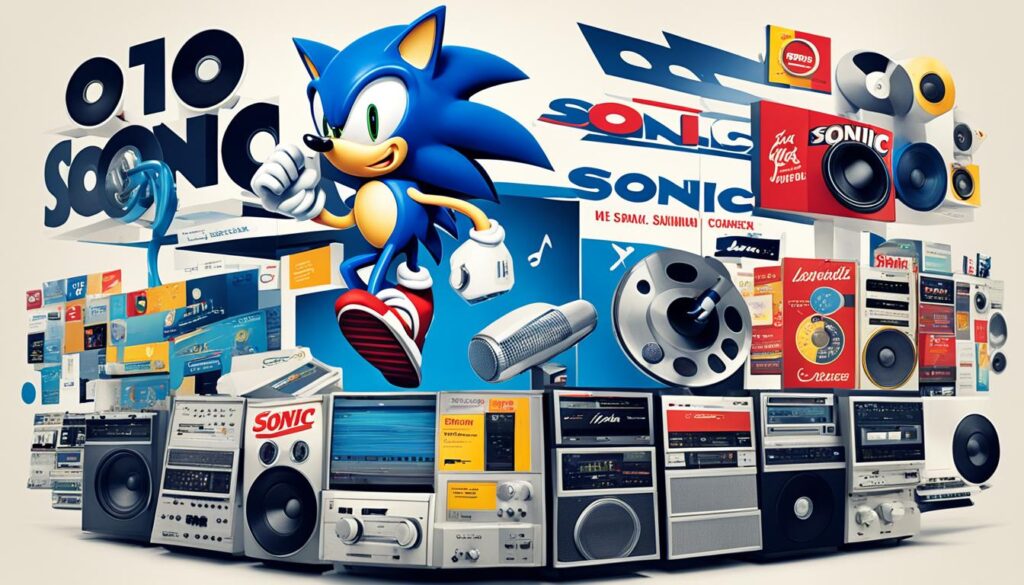
How Is the Ability of Music to Elicit Memories and Emotions Utilized in the Modern Marketing Landscape?
What Role Does Popular Music Play in the Evolution of Sonic Branding and Its Effectiveness in Triggering Autobiographical Memories?
What Are the Innovations in Music-Related Technologies for Creating Sonic Identity for Brands?
What Is the Way Music Continues to Evolve in Making Strong Connections with Consumers?
| Aspect | Utilization in Modern Marketing |
|---|---|
| Ability of music to elicit memories and emotions | Used to create emotional connections with consumers, enhance brand recognition, and trigger autobiographical memories. |
| Role of popular music | Serves as a powerful tool for sonic branding, effectively triggering memories and forging strong connections with the target audience. |
| Innovations in music-related technologies | Advancements in sound engineering, virtual reality, and interactive audio experiences enable brands to create unique sonic identities and immersive brand experiences. |
| The evolution of music | Brands must adapt and leverage the evolving music landscape to stay connected with consumers. Streaming platforms, social media, and immersive live experiences present new opportunities for engagement. |
Conclusion
Sonic branding, with its strategic use of sound elements, has emerged as a powerful tool in modern marketing. By harnessing the impact of music and the nostalgia-inducing power of jingles, brands can create lasting memories, forge emotional connections with consumers, and enhance brand recognition. The impact of music on memories and emotions cannot be understated. Understanding how music influences our thoughts and feelings is crucial in building a strong sonic identity for brands.
The future of sonic branding lies in the continued evolution of music in marketing. Advancements in technology and the use of popular music as a trigger for autobiographical memories will shape the way brands create their sonic identity. As music and history intertwine, they create a tapestry of sound that resonates with consumers and leaves a lasting impact. Music has the unique ability to transport us back in time, evoke emotions, and create a sense of connection with brands.
As we move forward, it is essential for brands to recognize the power of music and integrate it into their marketing strategies. By understanding the role that music plays in creating brands and memories, brands can tap into the collective nostalgia of their target audience. The power of sonic branding will continue to grow as music and history unite to shape the future of marketing, leaving a lasting sonic imprint on the minds and hearts of consumers.
FAQ
Why do Jingles Create Vivid Memories?
Jingles create vivid memories due to their catchy and repetitive nature. The musical and lyrical elements of jingles make them easy to remember and associate with a specific brand, evoking nostalgia and bringing back memories associated with a particular time, place, or product.
How do Jingles Evoke Autobiographical Memories?
Jingles evoke autobiographical memories by creating an auditory trigger associated with specific personal experiences. The melody, lyrics, and emotional tone of a jingle can bring back memories and emotions from the past, triggering recollection and forging a lasting connection with consumers.
What Aspects of Music Affect Auditory Trigger?
Certain aspects of music, such as rhythm, melody, and lyrics, play a significant role in triggering auditory memories. These elements activate the hippocampus, the part of the brain responsible for memory encoding and retrieval, leading to the recollection of past experiences.
How Does Nostalgia Marketing Work So Well with Jingles?
Nostalgia marketing capitalizes on the power of jingles from the past to create a sense of familiarity and emotional connection with consumers. By using jingles that were popular during their formative years, brands can evoke nostalgia and forge lasting emotional connections with their target audience.
What Neuroscience Studies Say about the Impact of Jingles on Recollection?
Neuroscience studies have shown that jingles have a profound impact on memory and recollection. Jingles specifically activate the hippocampus, the part of the brain responsible for memory encoding and retrieval. This activation enhances the recollection of past experiences associated with a particular jingle.
How Does Music Listening Affect the Cortex?
Music listening stimulates various regions of the cortex, eliciting emotional responses and enhancing the overall brand experience. The impact of music on the cortex plays a crucial role in establishing brand recognition, forging emotional connections, and creating a memorable sonic identity.
What Makes Nostalgia Marketing Work So Well, Especially with Millennials?
Nostalgia marketing is especially effective with millennials due to their strong emotional connection to music from their past. By using popular songs from their youth, brands can tap into this emotional connection, evoke nostalgia, and create a sense of familiarity and emotional resonance with their target audience.
What Is the Role of Jingles in the Next Campaign for Brands and Agencies?
Jingles continue to play a vital role in the next campaign for brands and agencies. They create a memorable sonic identity, enhance brand recognition, and leave a lasting impression on the target audience. Brands can leverage the power of jingles to connect with consumers and differentiate themselves in a crowded marketplace.
How Pepsi Set the Benchmark for Sonic Branding in Modern Marketing?
Pepsi is a prime example of successful sonic branding in modern marketing. Their iconic jingles and memorable campaigns have set the benchmark for other brands in the industry. Pepsi’s effective use of sonic branding has helped create a strong and recognizable brand identity, enhancing brand recognition and forging emotional connections with consumers.
How Does Music Playing Stimulate Strong Emotions and Recollection?
When music is playing, it stimulates strong emotions and enhances the recollection of past experiences. Key areas of the brain, such as the limbic system and the auditory cortex, are triggered by music, leading to emotional responses and memory activation. This connection between music, emotions, and memories creates a powerful and immersive brand experience.
What Are the Key Areas of the Brain Triggered by Music?
The limbic system and the auditory cortex are key areas of the brain triggered by music. The limbic system is responsible for processing emotions, while the auditory cortex processes auditory information. When music is playing, these areas are activated, leading to emotional responses and the activation of memory encoding and retrieval processes.
Why Is Music That Was Popular during Our Youth So Effective in Nostalgia Marketing?
Music that was popular during our youth is highly effective in nostalgia marketing because it brings back memories and emotions associated with that time period. By playing songs that were popular during their formative years, brands can evoke nostalgia and create a strong emotional connection with their target audience.
How Can Music Be Used to Evoke Memories in Boomer and Millennial Audiences?
Music can be used strategically to evoke memories in both boomer and millennial audiences. By playing songs that were popular during specific time periods, brands can trigger autobiographical memories and create a sense of familiarity and emotional connection. This targeted approach harnesses the power of music to create lasting brand memories.
How Can Brands and Agencies Use Music to Target Their Audience through Sonic Branding?
Brands and agencies can use music strategically to target their specific audience through sonic branding techniques. By creating music that resonates with their target demographic, brands can forge emotional connections, enhance brand recognition, and create a memorable sonic identity that appeals to their target audience.
What Are the Key Aspects of Creating Music to Elicit Strong Emotions in the Target Audience?
The key aspects of creating music to elicit strong emotions in the target audience include using appropriate melodies, lyrics, and emotional tones. Understanding the psychology of music is essential for brands to create music that resonates with their target audience, evokes emotions, and creates a lasting emotional connection.
Why Is It Essential for Brands to Understand the Psychology of Music in Making Music That Resonates?
Understanding the psychology of music is essential for brands to create music that resonates with their target audience. By understanding how different elements of music, such as rhythm, melody, and lyrics, affect emotions and trigger memories, brands can create a memorable sonic identity that forges an emotional connection with consumers.
What Role Does Music Therapy Play in Creating Sonic Identity for Brands?
Music therapy plays a role in creating a sonic identity for brands by using music strategically to evoke specific emotions and create a positive brand experience. Music therapists can help brands select and create music that aligns with their brand values, evokes the desired emotions, and creates a memorable and impactful brand identity.
How Is the Ability of Music to Elicit Memories and Emotions Utilized in the Modern Marketing Landscape?
The ability of music to elicit memories and emotions is continuously utilized in the modern marketing landscape. By strategically incorporating music, brands can create strong emotional connections with consumers, enhance brand recognition, and forge lasting memories and positive associations with their brand.
What Role Does Popular Music Play in the Evolution of Sonic Branding and Its Effectiveness in Triggering Autobiographical Memories?
Popular music plays a significant role in the evolution of sonic branding, as it is highly effective in triggering autobiographical memories and forging emotional connections with consumers. By utilizing popular songs that resonate with their target audience, brands can tap into the emotional nostalgia associated with those songs and create a unique and memorable brand experience.
What Are the Innovations in Music-Related Technologies for Creating Sonic Identity for Brands?
The future of sonic branding lies in the innovations in music-related technologies. Advancements in sound engineering, virtual reality, and interactive audio experiences are shaping the way brands create their sonic identity. These technologies offer new opportunities for brands to create immersive and engaging brand experiences that leverage the power of music.
What Is the Way Music Continues to Evolve in Making Strong Connections with Consumers?
Music continues to evolve as a powerful tool in making strong connections with consumers. Brands must adapt and leverage advancements in music-related technologies to stay relevant in the ever-changing marketing landscape. By staying attuned to the preferences and emotions of their target audience, brands can create music that resonates, evokes emotions, and creates a lasting emotional connection.
Natali – Editor in Chief (Strategy and Mastery, AI Expert) Natali, our Editor in Chief, is the driving force behind our content’s strategic direction. With a keen eye for detail and a deep understanding of market trends, Natali ensures that our content is top-notch and strategically aligned with our client’s goals. Her expertise in AI helps to seamlessly integrate advanced technology into our marketing strategies, pushing the boundaries of conventional marketing.
Marketing Strategy
Compact Slogans for Marketers with Big Visions

Welcome to our piece on concise slogans for marketers with grand aspirations. Here, we will delve into an assortment of memorable and effective slogans ideal for marketers aiming to create a significant impact using few words. These slogans have the potential to enhance your brand communication and connect with your intended audience, whether you’re in search of a branding slogan or a compelling catchphrase. So, let’s get started!
Key Takeaways:
- Compact slogans play a crucial role in marketing by capturing the essence of a brand or message in a few words.
- These slogans are designed to be memorable and resonate with the target audience, helping to build brand awareness.
- Crafting effective slogans for small businesses can make a big impact by conveying a strong message and capturing the essence of the brand.
- The future of slogans in marketing is constantly evolving, with trends emphasizing the use of catchy and impactful words.
- There are various tools available, such as slogan generators, to help marketers create unique and memorable slogans.
70 Slogans for Marketers Who Are Looking for Small Words with A Big Future
Compact Slogans for Marketers with Big Visions
- “Dream Big, Speak Small.”
- “Tiny Words, Giant Leaps.”
- “Brief Brilliance, Bold Future.”
- “Small Say, Big Play.”
- “Minimal Words, Maximal Impact.”
- “Concise Content, Vast Visions.”
- “Little Letters, Large Legacies.”
- “Short Speech, Long Reach.”
- “Succinct Statements, Substantial Success.”
- “Little Words, Loud Echoes.”
- “Brief Bits, Big Business.”
- “Small Speech, Huge Horizons.”
- “Short Shout, Broad Reach.”
- “Tiny Talk, Towering Targets.”
- “Concise Clarity, Colossal Conquests.”
- “Mini Messages, Mega Movements.”
- “Slight Sayings, Significant Successes.”
- “Compact Chatter, Climactic Change.”
- “Micro Messages, Macro Milestones.”
- “Brief Buzz, Boundless Breakthroughs.”
- “Little Lines, Large Landscapes.”
- “Short Slogans, Soaring Spirits.”
- “Tiny Texts, Tremendous Tales.”
- “Brevity’s Boost, Beyond Bounds.”
- “Small Script, Stellar Stories.”
- “Petite Phrases, Powerful Prospects.”
- “Minimalist Methods, Majestic Marks.”
- “Brief Branding, Boundless Benefits.”
- “Compact Concepts, Cosmic Creations.”
- “Tiny Terms, Transcendent Triumphs.”
- “Short Scripts, Supreme Success.”
- “Little Language, Lavish Legacies.”
- “Brief Broadcasts, Blazing Bridges.”
- “Slim Speech, Sky-Scraping Schemes.”
- “Mini Mottoes, Monumental Movements.”
- “Concise Communication, Cosmic Climbs.”
- “Petite Pitch, Peak Performance.”
- “Slim Sayings, Sublime Strategies.”
- “Micro Motifs, Mighty Milestones.”
- “Brief Bytes, Beyond Barriers.”
- “Small Statements, Stratospheric Strides.”
- “Compact Commentary, Colossal Conquest.”
- “Tiny Teasers, Titanic Transformations.”
- “Mini Mottos, Massive Momentum.”
- “Short Stanzas, Stunning Success.”
- “Petite Promises, Prodigious Progress.”
- “Mini Messages, Magnificent Missions.”
- “Concise Catchphrases, Celebrated Changes.”
- “Brief Blips, Broad Boundaries.”
- “Small Scripts, Spectacular Sprints.”
- “Short Snippets, Striking Stories.”
- “Tiny Tags, Tremendous Trajectories.”
- “Compact Captions, Climactic Courses.”
- “Mini Mantras, Major Milestones.”
- “Brief Blurbs, Boundless Blossoms.”
- “Small Shouts, Strong Statements.”
- “Concise Clips, Climbing Crescendos.”
- “Petite Phrasing, Pioneering Paths.”
- “Micro Missions, Monumental Maps.”
- “Tiny Text, Titanic Triumphs.”
- “Brevity in Business, Grandeur in Goals.”
- “Small Sayings, Sky-High Aspirations.”
- “Compact Creativity, Expansive Endeavors.”
- “Less Length, More Strength.”
- “Short and Sweet, Unbeatably Elite.”
- “Minimalist Magic, Monumental Milestones.”
- “Brief but Bold, Stories Untold.”
- “Small Slogans, Stellar Success.”
- “Tiny Terms, Towering Triumphs.”
- “Little Language, Limitless Potential.”
The Power of Compact Slogans in Marketing
When it comes to marketing, the power of compact slogans cannot be underestimated. These succinct phrases have the ability to capture the essence of a brand or message in just a few words, making them highly effective and memorable.
Marketing slogans are the heart and soul of any successful brand campaign. They serve as powerful tools for creating brand awareness and leaving a lasting impact on consumers. A catchy slogan or tagline can resonate with the target audience, evoking emotions, and creating a strong connection between the brand and its customers.
Branding slogans play a significant role in establishing a brand’s identity and mission. They convey the essence of what the brand stands for and leave a lasting impression on consumers. Think about some of the most iconic branding slogans like Nike’s “Just Do It” or Apple’s “Think Different.” These slogans have become synonymous with their respective brands and are instantly recognizable.
The use of impactful slogans in marketing is essential for building brand awareness. A catchy slogan has the power to grab attention and make a brand stand out in a crowded market. It can communicate the unique selling proposition of a product or service, differentiate the brand from its competitors, and leave a lasting impression on consumers.
The Importance of Powerful Words
Powerful words are key to creating a memorable slogan. By carefully choosing words that are impactful and resonate with the target audience, marketers can convey the essence of their brand in a concise and powerful way. Words like “innovative,” “inspiring,” “unforgettable,” and “transformative” can evoke strong emotions and create a lasting impact.
A powerful slogan can be the difference between a brand being forgotten or being remembered for years to come.
Additionally, a catchy slogan or tagline can help increase brand recall. When consumers are able to remember a brand’s slogan, it creates an association with the brand’s values and offerings, which can lead to increased brand loyalty and customer engagement.
Crafting Memorable Slogans for Lasting Brand Awareness
Creating a memorable slogan involves careful crafting and strategic thinking. It requires a deep understanding of the target audience and the brand’s unique selling points. By combining powerful words, a catchy tagline, and a clear brand message, marketers can create slogans that resonate with consumers and leave a lasting impact.
Remember, a memorable slogan is one that not only captures the essence of the brand but also leaves a lasting impression on the target audience. It should be concise, easy to understand, and evoke emotions that align with the brand’s values and mission.
By harnessing the power of compact slogans in marketing, brands can create a strong brand identity, increase brand awareness, and establish a meaningful connection with consumers. A catchy slogan has the potential to become a brand’s most valuable asset, resonating with customers and leaving a lasting impression.
Crafting Effective Slogans for Small Businesses
Crafting a catchy and impactful slogan is essential for small businesses. A well-crafted slogan can communicate your brand’s message, capture the attention of your target audience, and leave a lasting impression. In this section, we will provide you with tips and strategies to create slogans that resonate and inspire.
1. Keep it simple with small words
When it comes to slogans, simplicity is key. Using small words allows your message to be easily understood and remembered. Choose simple and concise words that convey the essence of your brand and what sets you apart from the competition.
2. Make it a marketing tool
A slogan is not just a catchy phrase; it is a powerful marketing tool that represents your brand. Your slogan should reflect your brand’s values, mission, and unique selling proposition. Use it across your marketing channels to reinforce your brand identity and create brand recognition.
“A good slogan is like a magnet that attracts customers to your business.” – Thorsten Meyer, Marketing & AI Expert
3. Aim for a catchy and impactful slogan
To grab attention and stand out from the crowd, your slogan needs to be catchy and impactful. Use rhymes, alliteration, or wordplay to make it memorable. It should evoke an emotional response and resonate with your target audience on a deeper level.
4. Be true to your brand
Your slogan should align with your brand’s identity and values. It should be authentic and reflect what makes your business unique. Take time to define your brand’s personality and use it as a guide to craft a slogan that speaks to your target audience.
5. Test and refine
Once you have created a slogan, test it with your target audience. Conduct surveys or focus groups to gather feedback and make improvements if necessary. Continuously refine your slogan based on customer insights to ensure it is effective and resonates well.
6. The power of a memorable slogan
A memorable slogan has the potential to become synonymous with your brand. It can create brand loyalty, boost brand recall, and differentiate your business from competitors. Invest time and effort in creating a memorable slogan that customers will remember and associate with your brand.

| Small Business | Catchy Slogan |
|---|---|
| Coffee Shop | A Sip of Happiness |
| Gym | Fit for Life |
| Bakery | Sweet Moments, Every Bite |
| Pet Grooming | Pawsitively Perfect |
The Future of Slogans in Marketing
As marketing continues to evolve, the role of slogans in capturing consumer attention and building brand awareness is also evolving. In this section, we will delve into the future of slogans in marketing and explore the latest trends that are shaping the industry.
Slogans have always been a powerful marketing tool, using catchy phrases and impactful words to leave a lasting impression on consumers. However, as consumer preferences and behaviors change, marketers need to adapt their approach to ensure their slogans resonate with their target audience.
The Rise of Personalization
One of the key trends in the future of slogans is the rise of personalization. Today’s consumers want to feel a personal connection with the brands they support, and slogans that speak directly to individuals can create that connection. Marketers are now leveraging data-driven insights to craft personalized slogans that align with the specific needs and preferences of their target audience.
“With the power of personalized slogans, brands can create a one-to-one connection with their customers, building trust, and loyalty.”
Embracing Digital Channels
In the digital age, marketing campaigns are no longer confined to traditional mediums. As consumers increasingly engage with brands online, slogans need to adapt to the digital landscape. This means creating slogans that are not only catchy but also optimized for search engines and shareable on social media platforms.
The Power of Storytelling
In an era where consumers value authenticity and connection, storytelling has become a powerful marketing strategy. Slogans that tell a compelling brand story can evoke emotions and create a deeper connection with the audience. By weaving narratives into their slogans, marketers can not only capture attention but also foster brand loyalty.
Seamless Integration
The future of slogans lies in their seamless integration across different marketing channels. Brands need to ensure that their slogans are consistent and cohesive across their website, social media profiles, advertisements, and other marketing touchpoints. This integration allows for maximum impact and creates a unified brand message that resonates with consumers.
As the marketing landscape continues to evolve, slogans will remain a valuable tool in building brand awareness and capturing consumer attention. By embracing personalization, optimizing for digital channels, harnessing the power of storytelling, and ensuring seamless integration, marketers can create slogans that have a lasting impact on their target audience.
Tools for Crafting Memorable Slogans
Crafting memorable slogans requires creativity and inspiration. To assist marketers in generating catchy and impactful slogans, there are various tools available. These tools, such as slogan generators and slogan makers, can help you create unique and memorable slogans for your brand. With their features and resources, you can easily develop the perfect slogan that captures the essence of your brand.
One such tool is the slogan generator. This tool allows you to input keywords or phrases related to your brand and industry. It then generates a range of slogan ideas that you can choose from or use as inspiration. The slogan generator takes the hassle out of brainstorming and provides you with a wide selection of potential slogans to consider.
“A good slogan generator is like having a creative partner by your side, offering endless ideas to help you stand out from the competition.” – Chris, SEO and Keywords Expert & Author
Another helpful tool is the slogan maker. This tool provides you with a step-by-step process for creating a catchy slogan. It guides you through each stage of the slogan development process, helping you refine your ideas and generate a powerful statement that resonates with your target audience.
In addition to slogan generators and slogan makers, there are also free slogan generators and slogan and tagline generators available. These online resources provide a range of options for crafting your brand slogan, allowing you to experiment and explore different possibilities. These free tools can be particularly valuable for small businesses or startups working on a limited budget.
When using these tools, it’s important to remember that they are meant to inspire and assist you in the slogan creation process. While they can generate slogan ideas, it’s essential to put your own creative touch and customize the slogans to align with your brand’s identity and message.
The image below reflects the power of slogan generators and makers in creating memorable slogans:

Tips for Generating Slogan Ideas
When using slogan generators or makers, here are some tips to keep in mind:
- Start with keywords: Enter keywords related to your brand, industry, or the message you want to convey. This will help the tool generate relevant slogan ideas.
- Experiment with different combinations: Play around with different word combinations to see what works best. The more variations you try, the more likely you are to find a catchy slogan.
- Consider your target audience: Keep your target audience in mind when generating slogan ideas. What language and tone will resonate with them? What message will capture their attention?
- Keep it simple and memorable: Opt for concise and easily memorable slogans. Avoid complex phrases that may confuse or be forgotten by your audience.
By utilizing these tools and following these tips, you can create captivating and impactful slogans for your brand. A strong and memorable slogan can differentiate your brand, enhance brand recall, and leave a lasting impression on your target audience.
Examples of Successful Slogans
Looking for inspiration? In this section, we will showcase examples of successful slogans from various industries. These memorable slogans have helped elevate brands and establish a strong presence in the market. By analyzing these examples, you can gain insights into what makes a great slogan and how to create a memorable one for your own brand.
1. Nike – “Just Do It”
“Just Do It” has become one of the most iconic slogans in advertising history. It embodies the essence of Nike’s brand and encourages individuals to push past their limits and take action. This simple and powerful slogan resonates with athletes and fitness enthusiasts of all levels, inspiring them to pursue their goals with determination.
2. Apple – “Think Different”
“Think Different” encapsulates Apple’s brand philosophy of innovation and non-conformity. This slogan celebrates individuality and creativity, positioning Apple as a brand that empowers users to break barriers and challenge the status quo. It has become synonymous with Apple’s identity and distinguishes the brand from its competitors.
3. Coca-Cola – “Taste the Feeling”
The slogan “Taste the Feeling” captures the essence of the Coca-Cola experience, emphasizing the sensory pleasure and emotional connection that comes with consuming their products. This slogan appeals to consumers’ desire for indulgence and joy, further solidifying Coca-Cola’s position as the leading soft drink brand.
These are just a few examples of successful slogans that have made a significant impact on their respective industries. Each one highlights the importance of a memorable slogan in creating brand identity, resonating with consumers, and establishing a strong market presence.

The Importance of a Catchy Tagline
A catchy tagline is more than just a few words. It is an integral part of a brand’s identity, leaving a lasting impression on consumers. At [Brand Name], we understand the power of a well-crafted tagline and its ability to resonate with our audience.
When it comes to brand recall, a catchy tagline can make all the difference. It acts as a mnemonic device, helping consumers remember our brand and what we stand for. With a memorable tagline, we ensure that our brand stays top of mind, even in a crowded marketplace.
An impactful tagline goes beyond mere words. It conveys our brand’s mission and values, summarizing our identity in a concise yet powerful manner. It captures the essence of who we are and what we aim to achieve, leaving a lasting impression on our audience.
For us at [Brand Name], our tagline is more than just a marketing tool. It is the embodiment of our brand’s identity and the guiding force behind everything we do. It sets us apart from our competitors and resonates with our target market, creating a strong and lasting connection.

The Power of a Catchy Tagline
“Just Do It” – Nike
This iconic tagline from Nike exemplifies the power of a catchy tagline. In just three simple words, it encapsulates the brand’s spirit of determination, inspiring millions around the world. It has become synonymous with Nike’s brand identity and mission, solidifying their position as a leader in the sporting industry.
- Creates brand recall and recognition
- Reflects brand’s mission and values
- Leaves a lasting impression on consumers
- Sets the brand apart from competitors
As marketers, we understand the importance of a catchy tagline. It is our opportunity to make a memorable impression and convey our brand’s identity. By crafting a catchy tagline, we can elevate our brand message, connect with our audience on a deeper level, and ultimately, drive long-term success.
Tips for Creating a Powerful Slogan
Creating a powerful slogan is a crucial step in establishing your brand’s identity and capturing the attention of your target audience. A catchy slogan helps differentiate your brand from competitors and leaves a lasting impression in the minds of consumers. To craft an impactful slogan that resonates with your audience and enhances your brand’s recall, consider the following tips:
1. Write a Catchy Slogan:
Choose words that are memorable and attention-grabbing. A catchy slogan uses language that evokes emotion, curiosity, or excitement, leaving a lasting impression on your audience.
2. Use Powerful Words:
Select strong and impactful words that convey the essence of your brand’s message. Power words evoke feelings and create a sense of urgency or importance, enhancing the effectiveness of your slogan.
3. Avoid Using Jargon or Complex Language:
Keep your slogan simple and easily understandable. Avoid using technical jargon or complex language that may confuse or alienate your audience. Clear and straightforward slogans are more likely to resonate with consumers.
4. Reflect Your Brand’s Identity:
Your slogan should accurately reflect your brand’s identity and values. Consider your brand’s mission, vision, and unique selling proposition when crafting your slogan to ensure it aligns with your brand’s overall messaging and positioning.
5. Keep It Impactful and Concise:
Avoid lengthy slogans and get straight to the point. An impactful slogan is concise, making it easier for consumers to remember and recall. Aim for a slogan that can be easily incorporated into marketing materials and brand communications.
6. Test and Refine:
Once you have created a slogan, test it with your target audience to gauge their response. Gather feedback and make necessary refinements to ensure your slogan effectively resonates with your intended market.
Remember, a powerful slogan is an essential component of your brand’s overall marketing strategy. It helps establish your brand’s identity, enhances brand recall, and communicates your unique value proposition. By following these tips, you can create a catchy and impactful slogan that elevates your brand and captures the attention of your target audience.

Conclusion
In conclusion, compact slogans offer marketers the opportunity to convey a powerful message in just a few words. These impactful slogans can help elevate brand messages and create a lasting impression on consumers.
By utilizing the tips and strategies discussed in this article, marketers can craft memorable slogans that resonate with their target audience and contribute to the success of their brand. From small words to big future, the power of branding slogans cannot be underestimated in today’s competitive marketing landscape.
So, start exploring the power of small words with a big future and watch your brand message soar. With impactful slogans, you can create a strong brand identity, build brand awareness, and leave a lasting impact on your target audience. Don’t miss out on the potential of catchy and memorable marketing slogans – they are the keys to unlocking the full potential of your brand.
FAQ
What are compact slogans?
Compact slogans are short and memorable phrases that capture the essence of a brand or message in just a few words.
Why are compact slogans important in marketing?
Compact slogans are important in marketing because they help elevate brand messages, create brand awareness, and leave a lasting impression on consumers.
How can I create an impactful slogan for my small business?
To create an impactful slogan for your small business, consider using small words that convey a strong message, align with your brand, and resonate with your target audience.
What is the future of slogans in marketing?
The future of slogans in marketing involves the use of catchy and impactful words that can continue to build brand awareness and resonate with consumers.
Are there any tools available to help me generate slogans?
Yes, there are tools such as slogan generators and slogan makers that can assist you in creating unique and memorable slogans for your brand.
Can you provide examples of successful slogans?
Certainly! Examples of successful slogans include “Just Do It” by Nike and “I’m Lovin’ It” by McDonald’s.
What is the importance of a catchy tagline?
A catchy tagline is important because it helps establish a brand’s identity, mission, and values in a concise and memorable way, contributing to brand recall and recognition.
How can I create a powerful slogan?
To create a powerful slogan, focus on using impactful and memorable words, keeping the message clear and simple, and ensuring it aligns with your brand’s identity and resonates with your target audience.
Natali – Editor in Chief (Strategy and Mastery, AI Expert) Natali, our Editor in Chief, is the driving force behind our content’s strategic direction. With a keen eye for detail and a deep understanding of market trends, Natali ensures that our content is top-notch and strategically aligned with our client’s goals. Her expertise in AI helps to seamlessly integrate advanced technology into our marketing strategies, pushing the boundaries of conventional marketing.
Marketing Strategy
Unlock Creative Sales Success: If It Doesn’t Sell, It Isn’t Creative

Welcome to our blog entry discussing the undeniable link between creative thinking and achieving sales success in the marketing sphere. In the current competitive environment, marketers are always on the lookout for novel methods to engage their target demographics and earn their loyalty. Yet, it’s essential to acknowledge that genuine creativity goes beyond crafting eye-catching campaigns or memorable catchphrases – it’s fundamentally about generating measurable outcomes, specifically, boosting sales.
Throughout this article, we will explore why a marketing campaign’s ability to sell should be the ultimate measure of its creative success. We will uncover the importance of creativity in marketing, examine how it impacts advertising effectiveness, and reveal the insights shared by advertising legend David Ogilvy. Additionally, we will provide practical strategies for effectively using creativity in your marketing efforts and discuss the key elements that define truly creative advertising.
Prepare to be inspired as we delve into the fascinating realm where creativity meets sales success. Together, let’s unlock the potential of creative marketing to drive your business forward.
Key Takeaways:
- Creativity in marketing should be measured by its ability to drive sales.
- The impact of creativity on advertising effectiveness is significant.
- David Ogilvy emphasized that if a marketing campaign doesn’t sell, it isn’t truly creative.
- A creative advertisement effectively communicates the message of the product or service.
- Having a clear goal is essential in creating a truly creative ad.
What Is the Importance of Creativity in Marketing?
In the world of marketing, creativity plays a pivotal role in capturing the attention and engagement of consumers. Creativity is the spark that ignites innovation and sets brands apart from their competitors. It is the driving force behind memorable and impactful campaigns that resonate with audiences.
How does creativity impact advertising effectiveness?
Creativity has a direct impact on the effectiveness of advertising. A creative and compelling ad captures the viewer’s attention, evokes emotions, and creates a lasting impression. It has the power to make a brand memorable and drive consumer action. With creative advertising, brands can stand out from the clutter and deliver their message in a unique and memorable way.
What did David Ogilvy say about creativity in advertising?
David Ogilvy, a renowned advertising executive, famously said, “If it doesn’t sell, it isn’t creative.” He believed that creativity should always serve the purpose of driving sales. Ogilvy emphasized the importance of aligning creativity with the ultimate goal of advertising: to deliver results and generate revenue. According to him, true creativity lies in the ability to create compelling campaigns that effectively sell products or services.
How can creativity enhance a marketing campaign’s performance?
Creativity has the power to enhance a marketing campaign’s performance in various ways. It can captivate an audience, increase brand awareness, build brand loyalty, and drive customer engagement. Creative campaigns stand out and leave a lasting impression on consumers, helping brands to foster strong relationships and drive business growth. Additionally, creative strategies can generate word-of-mouth marketing and organic social media buzz, amplifying a campaign’s reach and impact.
Does creativity play a role in digital marketing?
Absolutely! Creativity is equally important in digital marketing. With the rapid advancements in technology and the rise of social media, brands have endless opportunities to engage with their target audience online. Creative digital marketing campaigns leverage the unique capabilities of digital platforms to captivate, entertain, and provide value to consumers. Whether it’s through innovative content, interactive experiences, or immersive storytelling, creativity in digital marketing drives engagement, fosters brand loyalty, and ultimately boosts business results.
How to effectively use creativity in marketing?
In order to harness the power of creativity in marketing, it is essential to understand the key elements of a successful and impactful advertising campaign. By aligning the creative message with the brand, marketers can create a cohesive and memorable experience for their target audience. But how can we ensure that the creative message resonates with the audience and leads to a compelling marketing headline? Moreover, how can creativity be leveraged in email and performance marketing to drive optimal results? Let’s explore these questions further.
Key elements of a creative advertising campaign
A creative advertising campaign is built on several key elements that contribute to its success:
- Target audience research: Understanding the needs, preferences, and demographics of the target audience is crucial for crafting a campaign that resonates with them.
- Innovative ideas: Creativity thrives on fresh and innovative ideas that capture attention and stand out from the competition.
- Compelling storytelling: A well-crafted story can evoke emotions and create a connection between the brand and the audience.
- Visual appeal: Eye-catching designs and visuals play a significant role in attracting and retaining audience attention.
- Consistent branding: Maintaining consistency in brand messaging and visual identity helps build trust and recognition.
- Measurable goals: Setting clear and measurable goals ensures that the campaign’s success can be accurately evaluated.
Aligning the creative message with the brand
In order to effectively use creativity in marketing, it is crucial for the creative message to align with the brand’s values, personality, and positioning. This alignment ensures that the campaign accurately represents the brand and resonates with the target audience. By staying true to the brand identity, marketers can build trust, credibility, and long-term relationships with their customers.
Strategies to make the creative message resonate with the audience
Resonating with the audience requires a deep understanding of their needs, desires, and pain points. Incorporating the following strategies can help make the creative message highly relevant and relatable:
- Research and analyze audience insights: Conduct thorough research to gain insights into the target audience’s motivations, interests, and behaviors.
- Create personalized experiences: Tailor the creative message to address specific audience segments, ensuring that it speaks directly to their unique needs.
- Evoke emotions: Connect with the audience on an emotional level by triggering emotions that align with the campaign’s objectives and the brand’s essence.
- Use storytelling techniques: Craft narratives that engage the audience, draw them into the brand’s world, and leave a lasting impression.
The role of creativity in developing a compelling marketing headline
A compelling marketing headline is essential for grabbing attention and enticing the audience to explore further. Creativity plays a vital role in developing headlines that are catchy, memorable, and impactful. By using clever wordplay, intriguing questions, or thought-provoking statements, marketers can spark curiosity and make their headlines stand out from the competition.
Leveraging creativity in email and performance marketing
Creativity is not limited to traditional advertising channels but can be effectively leveraged in email and performance marketing as well. In email marketing, creative copywriting and engaging visuals can increase open rates and encourage click-throughs. In performance marketing, creative campaigns that experiment with different formats, targeting options, and ad placements can drive better conversion rates and overall campaign performance.
By effectively using creativity in marketing, marketers can elevate their campaigns, engage their audience on a deeper level, and achieve outstanding results. The following table summarizes the key strategies discussed above:
| Key Elements of a Creative Advertising Campaign | Aligning the Creative Message with the Brand | Strategies to Make the Creative Message Resonate with the Audience | The Role of Creativity in Developing a Compelling Marketing Headline | Leveraging Creativity in Email and Performance Marketing |
|---|---|---|---|---|
| Target audience research | Understanding the brand’s values and personality | Research and analyze audience insights | Using clever wordplay, intriguing questions, or thought-provoking statements | Creative copywriting and engaging visuals in emails |
| Innovative ideas | Maintaining consistency in brand messaging | Create personalized experiences | Crafting unique and memorable phrases that capture attention | Experimenting with different formats, targeting options, and ad placements |
| Compelling storytelling | Evoke emotions | Use storytelling techniques | Incorporating narrative elements that connect with audiences | Using narratives and case studies to demonstrate value |
| Visual appeal | Use storytelling techniques | Employing visual metaphors and imagery | Utilizing striking visuals or typography to draw attention | Designing visually attractive and attention-grabbing email layouts |
| Consistent branding | Reinforce brand identity | Regularly feature brand elements | Highlighting brand’s unique selling proposition (USP) | Ensuring brand visuals and language are uniform across all platforms |
| Measurable goals | Aligning campaign objectives with brand goals | Setting clear, quantifiable targets | Emphasizing the benefit or outcome in the headline | Tracking and analyzing performance to refine strategies |

What defines truly creative advertising?
In the world of advertising, creativity is the key to capturing the attention of consumers and making a lasting impact. Truly creative advertising campaigns go beyond the ordinary and push the boundaries of innovation and imagination. But what exactly defines truly creative advertising?
How can creativity be emphasized in an advertising campaign?
Emphasizing creativity in an advertising campaign involves thinking outside the box and exploring unique ways to engage with the target audience. From captivating visuals to compelling storytelling techniques, creative advertising campaigns are designed to stand out and create a memorable experience for the viewers.
What did David Ogilvy mean by “if it doesn’t sell, it isn’t creative”?
David Ogilvy, a renowned advertising executive, meant that the primary goal of advertising is to sell products or services. No matter how creative an advertisement may be, if it fails to drive sales or deliver results, it cannot be considered truly creative. Creativity should always be in service of achieving the marketing objectives and generating tangible results.
What are the characteristics of a truly creative advertisement?
A truly creative advertisement possesses several characteristics that set it apart from the rest. These include:
- Originality and uniqueness
- An emotional connection with the audience
- Captivating visuals or storytelling
- A clear and memorable message
- Innovative use of technology or media
How does a creative advertisement communicate the message of the product or service effectively?
A creative advertisement effectively communicates the message of a product or service through engaging storytelling, powerful visuals, and clear messaging. By using creativity as a tool, advertisers can capture the attention of the audience, create an emotional connection, and effectively convey the benefits and value of the product or service being advertised.
Why is it important to have a clear goal in mind when creating a truly creative ad?
Having a clear goal is crucial when creating a truly creative ad because it keeps the focus on delivering a message that aligns with the overall marketing objectives. A clear goal helps guide the creative process, ensuring that the advertisement effectively communicates the desired message and drives the desired actions from the target audience. Without a clear goal, creativity alone is not enough to create a successful advertising campaign.

Conclusion
In conclusion, creativity is an essential factor in successful marketing. Throughout this article, we have explored the importance of creativity in driving sales success and its impact on advertising effectiveness. We have discussed the perspective of renowned marketer David Ogilvy, who emphasized that true creativity lies in generating results.
We have also provided insights into effectively using creativity in marketing, including the key elements of a creative advertising campaign and strategies for aligning the creative message with the brand. Additionally, we have explored how creativity can be leveraged to resonate with the target audience, develop compelling marketing headlines, and enhance email and performance marketing.
A truly creative advertisement not only captivates but also effectively communicates the message of the product or service. It aligns with the brand’s values and objectives, compelling the target audience to take action. By having a clear goal in mind during the creative process, marketers can ensure that their campaigns are both innovative and effective.
In summary, embracing creativity in marketing is the key to achieving outstanding results. By prioritizing sales and considering the needs of the target audience, marketers can create campaigns that not only capture attention but also drive conversions. Remember, if a marketing campaign doesn’t sell, it cannot be considered truly creative.
FAQ
How does creativity impact advertising effectiveness?
Creativity plays a significant role in enhancing the effectiveness of advertising. Creative ads have the power to capture attention, evoke emotions, and leave a lasting impression on consumers. They can make a brand memorable and differentiate it from competitors.
What did David Ogilvy say about creativity in advertising?
David Ogilvy, often referred to as the “father of advertising,” famously said, “If it doesn’t sell, it isn’t creative.” According to Ogilvy, true creativity in advertising should always have the goal of selling in mind. Creative ideas and concepts should align with the target audience and effectively communicate the benefits of the product or service.
How can creativity enhance a marketing campaign’s performance?
Creativity can enhance the performance of a marketing campaign by grabbing the audience’s attention and creating a memorable brand experience. It can drive engagement, increase brand recall, and generate positive word-of-mouth. Creative campaigns that resonate with the target audience have the potential to boost sales and achieve a higher return on investment (ROI).
Does creativity play a role in digital marketing?
Absolutely. In the realm of digital marketing, creativity is crucial for cutting through the noise and capturing the online audience’s attention. Creative digital campaigns leverage modern tools and techniques to engage and persuade consumers. Whether it’s eye-catching visuals, interactive content, or compelling copywriting, creativity can make a significant difference in the success of digital marketing efforts.
What are the key elements of a creative advertising campaign?
A creative advertising campaign typically incorporates several key elements, including a compelling message, visually appealing design, strategic placement, and effective targeting. The message should resonate with the target audience and clearly communicate the unique selling points of the product or service. The design should be visually appealing and aligned with the brand’s identity.
How can a marketer ensure that the creative message aligns with the brand?
To ensure alignment between the creative message and the brand, marketers should conduct thorough market research and understand the brand’s core values and target audience. They should create messaging that reflects the brand’s personality and resonates with its target customers. Additionally, consistent branding elements, such as language, visuals, and tone of voice, should be incorporated into the creative message.
What strategies can be employed to make the creative message resonate with the audience?
Understanding the target audience is essential for creating a creative message that resonates. Marketers can employ strategies such as conducting consumer research, identifying pain points and desires, and crafting messaging that directly addresses those points. Emotional appeal, storytelling, and personalization are also effective strategies for making the creative message resonate with the audience.
What role does creativity play in developing a compelling marketing headline?
Creativity plays a crucial role in developing a compelling marketing headline. A creative headline grabs attention, piques curiosity, and entices the audience to read further. It should be concise, impactful, and aligned with the overall message of the marketing campaign. A well-crafted headline can draw the target audience into the content and increase the chances of conversion.
How can creativity be leveraged in email and performance marketing?
In email marketing, creativity can be leveraged by creating visually appealing and engaging email designs, crafting personalized and persuasive copywriting, and incorporating interactive elements. In performance marketing, creativity can be applied to optimize ad formats, messaging, and targeting strategies to drive higher conversion rates and improve overall campaign performance. Creative thinking can help marketers stand out in crowded inboxes and make their messages more compelling.
How can creativity be emphasized in an advertising campaign?
Creativity can be emphasized in an advertising campaign by thinking outside the box, taking risks, and exploring different concepts and ideas. Marketers should strive to create unique and memorable experiences for their audience through clever and innovative storytelling, visuals, and messaging. It’s important to strike the right balance between creativity and effectiveness, ensuring that the creative ideas align with the overall goals of the campaign.
What did David Ogilvy mean by “if it doesn’t sell, it isn’t creative”?
David Ogilvy’s quote emphasizes the importance of sales-driven creativity in advertising. He believed that creativity should always serve the purpose of selling a product or service. A truly creative advertisement takes into account the target audience, their needs and desires, and effectively communicates the value proposition. If an advertisement fails to drive sales, regardless of how creative or clever it may seem, it ultimately falls short of achieving its purpose.
What are the characteristics of a truly creative advertisement?
A truly creative advertisement is one that effectively communicates the message of a product or service while capturing the attention and interest of the target audience. It combines unique and innovative concepts, visuals, and storytelling techniques to create a memorable brand experience. A creative advertisement should be aligned with the brand’s identity, evoke emotion, and persuade consumers to take action.
Why is it important to have a clear goal in mind when creating a truly creative ad?
Having a clear goal is crucial when creating a truly creative ad because it ensures that the creative elements are purposeful and effective. A clear goal helps focus the creative process, align the content with the target audience’s needs and desires, and guide the strategic decisions that will ultimately drive sales. Without a clear goal, creativity may result in a visually appealing but ultimately ineffective advertisement.
Natali – Editor in Chief (Strategy and Mastery, AI Expert) Natali, our Editor in Chief, is the driving force behind our content’s strategic direction. With a keen eye for detail and a deep understanding of market trends, Natali ensures that our content is top-notch and strategically aligned with our client’s goals. Her expertise in AI helps to seamlessly integrate advanced technology into our marketing strategies, pushing the boundaries of conventional marketing.
Marketing Strategy
B2B Lead Generation Checklist for New Customers
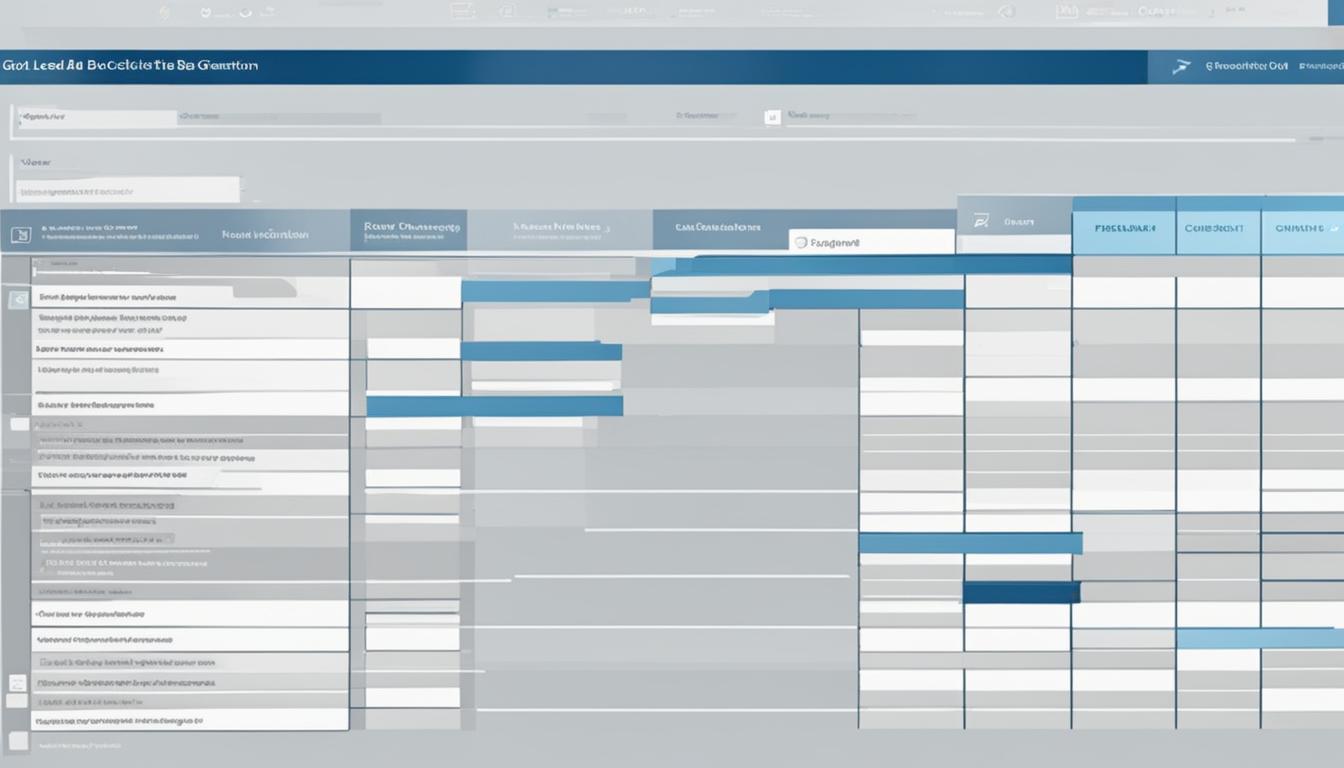
Are you finding it tough to attract new B2B leads and win over customers? This challenge is common among owners of small and medium-sized enterprises, usually stemming from ineffective pipelines and insufficient understanding of how to ensure a steady flow of future business. Fortunately, you’re not alone—we’re here to offer assistance!
Introducing our comprehensive B2B Lead Generation Checklist, designed to turn your lead generation strategy into a well-oiled machine. By following this checklist, you’ll be able to attract high-quality leads and convert them into valuable customers.
Key Takeaways:
- Identify your target audience by researching industry, company size, location, and decision-maker roles.
- Create a strong value proposition that aligns with your target market’s business issues.
- Optimize your website to be mobile-responsive and user-friendly, improving online visibility.
- Utilize email marketing to build and segment email lists, developing personalized campaigns.
- Leverage social media marketing, particularly LinkedIn, to network and generate leads through industry-relevant content.
50 B2B Lead Generation Checklist for New Customers
- Define Your Target Audience:
- Identify ideal customer profiles (ICPs).
- Research industry, company size, location, and decision-maker roles.
- Develop a Strong Value Proposition:
- Clearly articulate what sets your product/service apart.
- Focus on benefits specific to your B2B audience.
- Optimize Your Website:
- Ensure your website is user-friendly and mobile-responsive.
- Include clear calls-to-action (CTAs) and lead capture forms.
- Content Marketing:
- Create valuable, industry-relevant content (blogs, whitepapers, e-books).
- Use SEO strategies to enhance online visibility.
- Email Marketing:
- Build and segment email lists.
- Develop personalized email campaigns.
- Social Media Marketing:
- Identify which platforms your B2B audience frequents.
- Engage with content, ads, and direct outreach.
- Leverage LinkedIn:
- Utilize LinkedIn for networking and lead generation.
- Participate in relevant groups and forums.
- Host Webinars and Online Events:
- Share expertise and industry insights.
- Capture leads through registration.
- Networking and Partnerships:
- Attend industry conferences and events.
- Form strategic partnerships with complementary businesses.
- Referral Programs:
- Encourage existing customers to refer new leads.
- Offer incentives for successful referrals.
- Utilize CRM Software:
- Implement a CRM to track leads and customer interactions.
- Analyze data for improved targeting and personalization.
- Paid Advertising:
- Invest in PPC campaigns on Google, LinkedIn, and other platforms.
- Target ads based on specific ICP criteria.
- Retargeting Campaigns:
- Implement retargeting to engage previous website visitors.
- Use personalized messaging based on their interaction history.
- Cold Outreach:
- Engage in cold calling or emailing.
- Personalize your outreach message.
- Participate in Industry Forums and Groups:
- Share insights and engage in discussions.
- Position your brand as a thought leader.
- Video Marketing:
- Create informational and promotional videos.
- Share on social media, YouTube, and your website.
- Case Studies and Testimonials:
- Showcase success stories from existing clients.
- Use these as proof points in marketing materials.
- SEO Optimization:
- Regularly update your website with SEO-friendly content.
- Conduct keyword research relevant to your B2B audience.
- Attend and Exhibit at Trade Shows:
- Network and generate leads in person.
- Offer demos or informational sessions.
- Influencer Partnerships:
- Collaborate with industry influencers.
- Leverage their audience for brand exposure.
- Account-Based Marketing (ABM):
- Target specific high-value accounts.
- Create personalized marketing campaigns.
- Utilize Analytics and Reporting:
- Regularly review marketing analytics.
- Adjust strategies based on performance data.
- Customer Feedback and Surveys:
- Gather feedback to improve offerings.
- Use insights to refine marketing strategies.
- Create a Blog:
- Regularly publish relevant, informative content.
- Use it to drive traffic and establish expertise.
- Offer Free Trials or Demos:
- Provide prospects with a risk-free way to experience your service/product.
- Use these opportunities to gather lead information.
- Develop a Strong Brand:
- Ensure consistent branding across all channels.
- Build a brand that resonates with your B2B audience.
- Online Directories and Listings:
- List your business in relevant online directories.
- Ensure your information is up-to-date and accurate.
- Community Engagement:
- Participate in community events and sponsorships.
- Engage with local businesses and organizations.
- Podcasts:
- Start a podcast or be a guest on relevant podcasts.
- Share expertise to attract a relevant audience.
- Use Data and AI:
- Leverage data analytics and AI for targeted marketing.
- Predictive analytics can identify potential leads.
- Press Releases:
- Use press releases to announce significant achievements or news.
- Helps in getting media coverage and exposure.
- Mobile Marketing:
- Ensure your marketing is optimized for mobile users.
- SMS marketing for direct outreach.
- Personalized Landing Pages:
- Create landing pages tailored to different segments.
- Increase relevance and conversion rates.
- Conduct Market Research:
- Stay updated on industry trends and customer needs.
- Adjust your strategies based on market insights.
- Interactive Tools and Calculators:
- Provide useful online tools related to your industry.
- Capture leads through tool usage.
- Offer Exclusive Memberships or Clubs:
- Create a sense of exclusivity and community.
- Offer special perks to members.
- Collaborate with Other Businesses:
- Cross-promotion with non-competitive businesses.
- Expand your reach and credibility.
- Employee Advocacy Programs:
- Encourage employees to promote the company.
- Utilize their networks for expanded reach.
- Quality Assurance:
- Ensure your product/service is top-notch.
- Good quality naturally attracts business leads.
- Chatbots for Lead Qualification:
- Use AI chatbots to engage visitors and qualify leads.
- Automate initial interactions on your website.
- Customer Success Stories:
- Share detailed stories of how customers benefited.
- Builds trust and credibility.
- Optimize for Voice Search:
- Ensure your content is optimized for voice search queries.
- Cater to the growing use of voice assistants.
- Local SEO:
- Optimize for local search results.
- Important if your business serves specific geographic areas.
- Offer Educational Courses or Workshops:
- Share expertise through courses or workshops.
- Establish authority and gather leads.
- QR Codes in Marketing Materials:
- Use QR codes in offline materials for easy access to online resources.
- Track engagement through QR scans.
- Interactive Content:
- Create quizzes, polls, or interactive videos.
- Engage users and collect lead information.
- Sponsorship of Webinars or Podcasts:
- Sponsor relevant industry events or shows.
- Gain exposure to a targeted audience.
- Create a Referral Network:
- Network with complementary businesses for referrals.
- Establish mutually beneficial relationships.
- Use Testimonials in Advertising:
- Feature customer testimonials in your ads.
- Increases trust and credibility.
- Continuous Learning and Adaptation:
- Stay informed about new marketing trends and tools.
- Continuously refine and adapt your strategies.
Identify Your Target Audience
Understanding your target market’s problems and pain points is crucial for effective lead generation. In order to develop successful lead generation strategies, it’s important to identify your ideal customer profiles by researching their industry, company size, location, and decision-maker roles.
By conducting thorough research, you can gain valuable insights into your target audience and tailor your marketing efforts to address their specific needs and challenges. This targeted approach will allow you to attract the right prospects and increase the likelihood of converting them into customers.
When identifying your ideal customer profiles, consider the following:
- Industry: Determine which industries can benefit the most from your products or services. This will help you focus your efforts on the most relevant prospects.
- Company size: Assess the size of companies that are likely to require your offerings. This will assist you in tailoring your messaging and solutions to meet their specific requirements.
- Location: Understand the geographical areas where your target audience is concentrated. This will help you optimize your marketing efforts to reach prospects in those locations.
- Decision-maker roles: Identify the key decision-makers within the organizations you’re targeting. Knowing who has the authority to make purchasing decisions will enable you to better communicate the value of your offerings.
By strategically identifying your target audience, you can focus your lead generation efforts on the most promising prospects, saving time and resources while maximizing your conversion rates.
“The most effective lead generation strategies begin with a deep understanding of your target audience’s needs and challenges.”
Develop a Strong Value Proposition
When it comes to B2B lead generation, having a strong value proposition is crucial. It’s what sets your business apart from the competition and entices your target market to choose you over others. Developing a value proposition that resonates with your prospects and highlights the ways in which your solution aligns with their specific business issues is essential for success.
At [Your Company Name], we understand the importance of crafting a value proposition that captures the attention of potential customers and compels them to take action. Our team of experts works alongside you to identify your unique selling points and translate them into a compelling message that speaks directly to your target audience’s needs and aspirations.
Through extensive market research and analysis, we uncover the pain points and challenges faced by your ideal customers. Armed with this knowledge, we create a value proposition that not only addresses these pain points but also positions your solution as the answer they’ve been searching for.
“Our solution is designed to address the specific pain points your business faces, delivering measurable results and a clear return on investment. By partnering with us, you can streamline your operations, reduce costs, and achieve your growth goals.”
We recognize that each target market is unique, so we tailor our value propositions to fit the specific needs of your audience. Whether your industry is healthcare, technology, or manufacturing, our team has the expertise to speak their language and deliver a compelling value proposition that resonates.
With a strong value proposition in hand, you can differentiate your brand, effectively communicate your unique value, and build trust with your target audience. By clearly articulating what sets you apart and the benefits you offer, you increase your chances of attracting and converting high-quality leads.
Investing in a well-crafted value proposition is one of the most effective ways to drive B2B lead generation. It not only helps you stand out from the competition but also establishes your credibility and highlights the value you bring to the table. At [Your Company Name], we specialize in helping businesses like yours develop compelling value propositions that generate results.
Why Choose Us?
- A team of experienced professionals dedicated to understanding your business and target audience
- Proven track record of creating impactful value propositions that drive lead generation
- Industry-specific expertise to tailor your value proposition to resonate with your audience
- A collaborative approach that includes your input and feedback throughout the process
- A commitment to delivering results and helping your business grow
Make your mark in the B2B marketplace with a strong value proposition that captivates your prospects and positions your business as the solution to their problems. Contact us today to learn more about how we can help you develop a compelling value proposition that drives B2B lead generation.

Optimize Your Website
In today’s digital age, having a strong online presence is essential for the success of your B2B lead generation efforts. One of the key factors in attracting and engaging potential customers is ensuring that your website is optimized for optimal user experience and search engine visibility. In this section, we will explore how to optimize your website to maximize its effectiveness in driving qualified leads and conversions.
Make Your Website Mobile-Responsive
With the increasing use of smartphones and tablets, it is crucial to ensure that your website is mobile-responsive. A mobile-responsive website automatically adjusts its layout and content to fit different screen sizes, providing a seamless browsing experience for users on any device. By optimizing your website for mobile devices, you can reach a wider audience and improve user engagement.
To make your website mobile-responsive, consider using responsive design frameworks and tools that enable your website to adapt to different screen sizes. Test your website across various devices to ensure that it displays properly and functions optimally on both desktop and mobile platforms.
Enhance User-Friendliness
A user-friendly website is essential for capturing and retaining the attention of potential customers. A website that is easy to navigate, loads quickly, and provides relevant and valuable content will leave a positive impression on visitors, encouraging them to stay longer and explore further.
To enhance the user-friendliness of your website, consider the following:
- Ensure clear and intuitive navigation menus that guide visitors to the information they are seeking.
- Optimize page loading speed by compressing images, minimizing code, and leveraging caching techniques.
- Organize content in a logical and structured manner, making it easy for visitors to find what they need.
- Provide clear and concise calls-to-action to guide visitors towards the next steps in their buyer’s journey.
Implement SEO Strategies
Search engine optimization (SEO) plays a crucial role in improving your website’s visibility on search engine result pages (SERPs). By optimizing your website for relevant keywords and ensuring that it meets search engine guidelines, you can increase organic traffic and attract potential customers who are actively searching for solutions in your industry.
Consider the following SEO strategies to optimize your website:
- Perform keyword research to identify relevant keywords and incorporate them naturally into your website content.
- Create high-quality, informative, and engaging content that appeals to your target audience and attracts backlinks from authoritative websites.
- Optimize your meta tags, including title tags and meta descriptions, to improve click-through rates from search engine results.
- Ensure that your website’s URL structure is clean and descriptive, making it easy for search engines and users to understand the content of each page.
By implementing these SEO strategies, you can improve your website’s ranking on SERPs, increase organic traffic, and ultimately generate more qualified leads.

Having a mobile-responsive and user-friendly website is crucial for attracting and engaging potential customers in the digital era. By optimizing your website and implementing SEO strategies, you can enhance your online visibility, improve user experience, and drive qualified leads. In the next section, we will explore the power of email marketing in your B2B lead generation efforts.
Utilize Email Marketing
Email marketing is a powerful tool that allows us to connect with our target audience, build relationships, and drive conversions. By effectively leveraging email marketing, we can generate leads, nurture prospects, and ultimately grow our business.
To make the most of email marketing, it’s essential to build and segment email lists. By segmenting our lists based on specific criteria such as demographics, behavior, or interests, we can deliver personalized and relevant content to different groups of subscribers. This helps us tailor our messaging and increase engagement.
Table: Types of Email Segmentation
| Segmentation Criteria | Segment Examples |
|---|---|
| Demographics | Age, gender, location |
| Behavior | Purchase history, engagement level |
| Interests | Product preferences, content engagement |
Once we have segmented our email lists, it’s time to develop personalized email campaigns. Personalization goes beyond simply addressing subscribers by their first names. It involves crafting tailored content that speaks directly to their needs, pain points, and interests.
Personalized emails have been found to have higher open rates and click-through rates compared to generic, one-size-fits-all emails. When subscribers feel that the content resonates with them personally, they are more likely to take action.
We can incorporate dynamic content into our emails, such as product recommendations based on previous purchases or personalized offers based on subscriber behavior. This level of personalization increases the chances of conversion and builds stronger relationships with our audience.
When developing our email campaigns, it’s important to provide value to our subscribers. This can include sharing educational content, exclusive promotions, or useful resources that solve their pain points and enrich their experience with our brand.
Remember, email marketing allows us to directly communicate with our audience, so it’s crucial to consistently monitor and analyze campaign performance. By tracking metrics such as open rates, click-through rates, and conversions, we can gain insights into what works and make data-driven decisions to optimize our email marketing efforts.
With an effective email marketing strategy in place, we can nurture leads, drive conversions, and maximize our business growth.
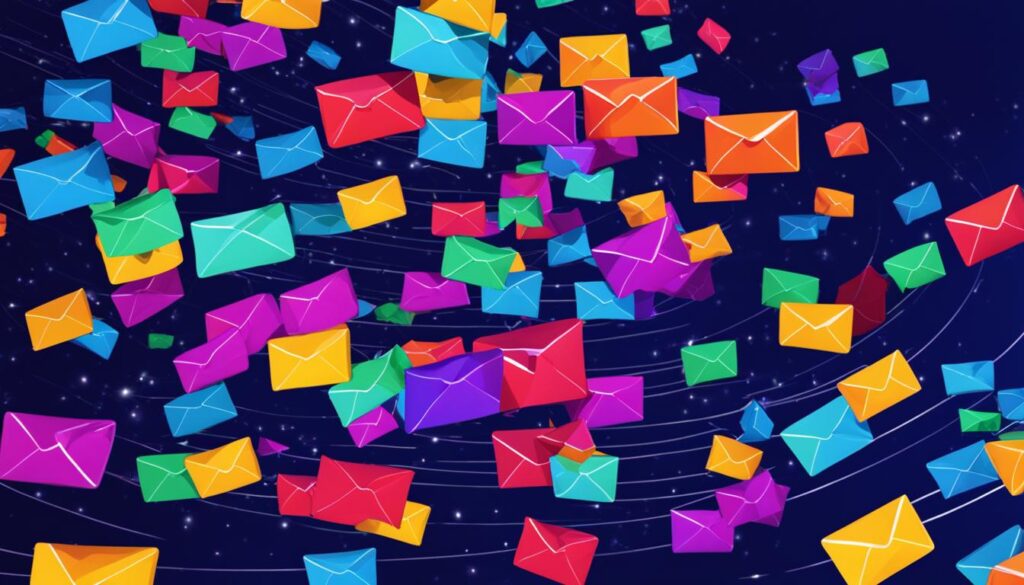
Leverage Social Media Marketing
When it comes to expanding your reach and generating leads, social media marketing is an invaluable tool. One platform that stands out for B2B networking is LinkedIn. By leveraging social media, particularly LinkedIn, you can connect with industry professionals, showcase your expertise, and drive potential clients to your business.
But how do you effectively leverage LinkedIn for lead generation?
- Optimize your LinkedIn profile: Make sure your profile is complete and includes relevant keywords related to your industry and expertise. Use a professional headshot and write a compelling summary that captures the attention of potential prospects.
- Join industry-relevant groups: Engage in conversations and discussions within LinkedIn groups that are relevant to your target audience. Provide valuable insights and contribute to the community to establish yourself as an authority in the field.
- Share industry-specific content: Regularly share articles, blog posts, and other content related to your industry. This allows you to demonstrate your knowledge and expertise, attracting the attention of potential clients who see you as a valuable resource.
- Engage with your connections: Actively engage with your LinkedIn connections by liking, commenting on, and sharing their posts. This helps build relationships and increases your visibility within your network.
- Utilize LinkedIn advertising: Consider using LinkedIn’s advertising features to target specific demographics and showcase your business to relevant professionals. This can help amplify your reach and generate leads.
By leveraging social media marketing, specifically LinkedIn, you can build valuable connections, establish your authority in the industry, and generate leads for your B2B business.
“Social media is not just an activity; it is an investment of valuable time and resources. Surround yourself with people who not just support you and stay with you, but inform your thinking about ways to WOW your online presence.”
– Sean Gardner, Digital Media Strategist

Host Webinars and Online Events
At our company, we understand the importance of staying connected with our audience and providing valuable insights. That’s why we host webinars and online events to share our expertise and industry knowledge. These virtual gatherings allow us to connect with potential customers from all over the world, offering them valuable information and an opportunity to engage with us.
Hosting webinars and online events is a powerful lead generation strategy that not only helps us establish ourselves as thought leaders but also allows us to capture leads through registration. By requiring attendees to register before joining our events, we can collect valuable contact information and expand our prospect database.
During our webinars, we provide valuable content and insights that address the challenges and pain points of our target audience. By doing so, we can position ourselves as trusted experts in our industry, establishing credibility and building relationships with potential customers.
Our webinars and online events also offer an interactive platform for participants to ask questions, share their experiences, and engage in discussions. This provides us with valuable feedback and insights into the needs and preferences of our target market, helping us tailor our offerings to better meet their needs.
By hosting webinars and online events, we can:
- Share our expertise and industry insights
- Establish ourselves as thought leaders
- Capture leads through registration
- Build relationships with potential customers
- Collect valuable feedback and insights
Join us for our upcoming webinars and online events to learn more about our industry and how our solutions can address your business challenges.
Customer Testimonial
“I attended one of their webinars and was impressed with the depth of knowledge they shared. The session was interactive, and I had the opportunity to ask questions and get direct answers from the experts. It was a valuable experience, and I’m now considering their solutions for my business.”
– Sarah Thompson, CEO of Thompson Marketing Solutions
Table: Examples of our upcoming webinars and online events:
| Date | Topic | Registration Link |
|---|---|---|
| October 15th, 2022 | Innovative Strategies for B2B Lead Generation | Register Now |
| November 2nd, 2022 | Driving Customer Engagement through Social Media | Register Now |
| December 10th, 2022 | The Future of Digital Marketing: Trends and Insights | Register Now |

Network and Attend Conferences and Events
Networking and partnerships are crucial for expanding your business and generating valuable leads. By attending industry conferences and events, you can connect with potential customers, establish meaningful relationships, and stay updated on the latest market trends. Additionally, implementing referral programs can help you tap into existing networks and expand your reach.
When we attend industry conferences and events, we have the opportunity to showcase our expertise, learn from industry leaders, and make valuable connections. These gatherings bring together like-minded professionals who are actively seeking new solutions and partnerships. By participating in such events, we position ourselves as thought leaders in our field and gain visibility among our target audience.
But it’s not just about attending these events – it’s about taking full advantage of the networking opportunities they provide. Actively engage with other attendees, exchange contact information, and follow up with personalized outreach after the event. By nurturing these connections, we can establish long-term partnerships and drive additional business.
Referral programs are another effective way to leverage existing relationships and expand our reach. By incentivizing our satisfied customers and partners to refer others to us, we can tap into their networks and gain access to warm leads. These referrals often come with a high level of trust, making it easier to convert them into paying customers.
Benefits of Networking and Attending Conferences and Events
- Expand your professional network, connecting with potential customers, industry leaders, and partners.
- Position yourself as a thought leader in your field and gain visibility among your target audience.
- Stay updated on the latest market trends and innovations.
- Exchange knowledge and insights with industry peers.
- Generate warm leads through referral programs and tap into existing networks.
Attending industry conferences and events has been a game-changer for our business. We’ve made invaluable connections, secured partnerships, and gained new customers. It’s not just about what happens at the event, but the ongoing relationships and opportunities that arise from them.
| Networking and Attend Conferences and Events | Referral Programs |
|---|---|
| Expand your professional network | Tap into existing networks |
| Connect with potential customers | Incentivize referrals |
| Establish partnerships | Gain access to warm leads |

Measure and Track Campaign Results
Tracking the success of your lead generation campaigns is crucial to understanding their effectiveness and determining areas for improvement. By measuring and evaluating campaign metrics, you can make informed decisions to optimize your strategies and drive better results.
Testing different elements of your campaigns allows you to identify what resonates best with your target audience. This can include testing different email subject lines, ad creatives, landing page designs, and call-to-action buttons. By experimenting and analyzing the results, you can refine your approach and optimize conversion rates.
“Testing is an essential part of our lead generation strategy. By running A/B tests on our email campaigns, we have been able to increase our click-through rates by 20%.”
Measuring and tracking key metrics provides valuable insights into the performance of your campaigns. Some important metrics to evaluate include:
- Email clicks: Monitor the number of clicks on links within your emails to gauge how engaging your content is and how well your call-to-action is performing.
- Social media shares: Track the number of shares your social media posts receive to determine the reach and impact of your content.
- Sales conversions: Measure the number of leads that convert into customers to assess the overall success of your campaigns in driving revenue.
Evaluating campaign metrics allows you to identify trends, patterns, and areas for improvement. Analyze the data to understand which channels and tactics are most effective in generating leads and conversions. Use this information to allocate your resources strategically and focus on initiatives that provide the highest return on investment.
To help you visualize and organize your campaign data, here is a table summarizing the key metrics to measure and track:
| Metric | Description |
|---|---|
| Email clicks | Number of clicks on links within emails |
| Social media shares | Number of times your social media content is shared |
| Sales conversions | Number of leads that convert into paying customers |
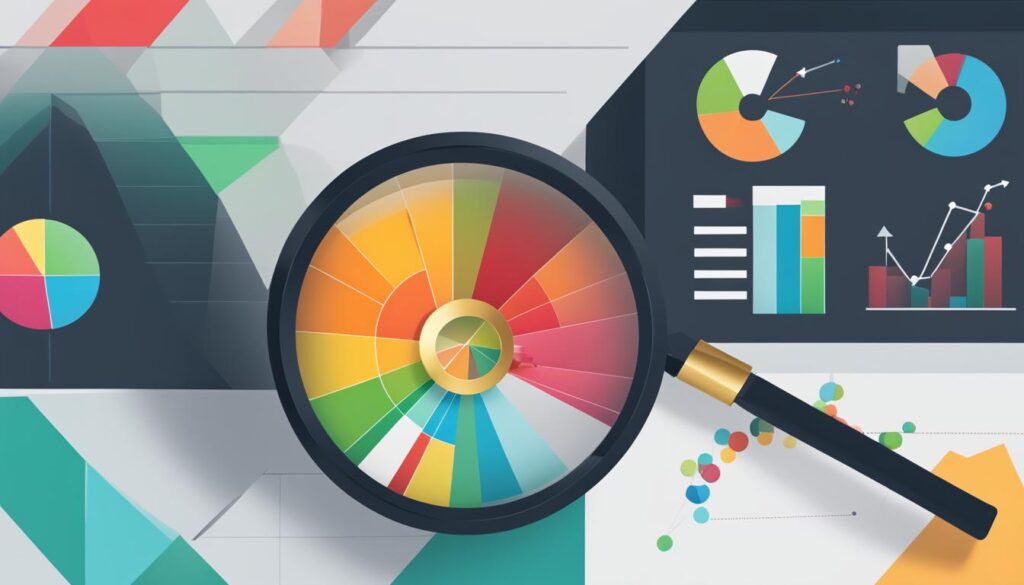
In conclusion, tracking and evaluating campaign results is essential for successful lead generation. By continuously testing, measuring, and analyzing your metrics, you can make data-driven decisions to optimize your strategies and improve your overall performance.
Qualify and Nurture Leads
Once you have captured leads through your various marketing channels, it’s essential to qualify them and nurture their interest to move them through the sales funnel. This involves assessing their engagement and determining their level of interest in your products or services.
One effective way to qualify leads is by using lead capture forms on your website. These forms allow potential customers to provide their contact information in exchange for valuable resources, such as eBooks, whitepapers, or webinar registrations. By collecting this information, you can gain insights into their specific needs and preferences.
Additionally, implementing lead nurturing techniques is crucial for building relationships with your leads and guiding them towards making a purchase. This involves engaging with them through personalized emails, relevant content, and targeted marketing campaigns. By providing valuable information and addressing their pain points, you can establish trust and credibility, increasing the likelihood of converting them into paying customers.
Lead Nurturing Techniques
- Segmentation: Divide your leads into different groups based on their characteristics, interests, or behaviors. This allows you to tailor your communication and content to their specific needs, increasing relevance and engagement.
- Personalization: Customize your messages and offers to align with each lead’s individual preferences and challenges. This personal touch demonstrates that you understand their unique situation and increases the chances of conversion.
- Automated Workflows: Use marketing automation tools to set up automated workflows that deliver timely and targeted messages to your leads. This ensures consistent communication and reduces manual effort.
- Educational Content: Provide educational resources, such as blog posts, videos, or webinars, that address your leads’ pain points and offer solutions. Sharing valuable insights positions your brand as an industry authority and nurtures trust.
- Progressive Profiling: Gradually collect more information about your leads over time by requesting additional details through successive interactions. This helps you build a comprehensive profile and tailor your engagement strategies.
By effectively qualifying and nurturing your leads, you can guide them through the sales funnel and increase the likelihood of conversion. Implement lead capture forms and lead nurturing techniques to build meaningful relationships with your prospects and drive success in your B2B lead generation efforts.

| Nurturing Technique | Description |
|---|---|
| Segmentation | Divide leads into groups based on characteristics, interests, and behaviors. |
| Personalization | Customize messages and offers to align with each lead’s preferences and challenges. |
| Automated Workflows | Set up automated workflows that deliver targeted messages to leads. |
| Educational Content | Provide valuable resources that address leads’ pain points and offer solutions. |
| Progressive Profiling | Collect additional information about leads through successive interactions. |
Evaluate and Evolve Your Strategy
Continually assessing and refining your lead generation strategy is essential to maximize its effectiveness and ensure long-term success. By regularly evaluating your approach and making necessary adjustments, you can stay ahead of the competition and achieve your growth goals. Here are some key steps to help you evaluate and evolve your strategy:
- Review your strategic assessment: Take a closer look at your initial strategic assessment and compare it to the current state of your lead generation efforts. Identify any gaps or areas for improvement that may have emerged since your strategy was first developed.
- Analyze campaign performance: Evaluate the performance of your lead generation campaigns by tracking key metrics such as conversion rates, customer acquisition costs, and return on investment. This analysis will enable you to identify which tactics are yielding the best results and which ones may require adjustment.
- Gather feedback from your team: Engage your marketing and sales teams in the evaluation process. Solicit their input and gather their observations on the effectiveness of the current strategy. Their insights can provide valuable perspectives and uncover blind spots.
- Seek customer feedback: Reach out to your existing customers and leads to gather feedback on their experiences with your lead generation efforts. Ask for their suggestions and recommendations on how you can improve your strategy to better meet their needs.
- Stay up to date with industry trends: Continuously monitor industry trends and best practices in lead generation. Keep an eye on emerging technologies, changing customer behaviors, and new marketing strategies that could enhance your approach.
“Without evaluation and adjustment, even the most well-designed strategy can become stagnant and lose its effectiveness.”
Remember, lead generation is an evolving process, and what works today may not work tomorrow. By regularly assessing your strategy, adjusting your tactics, and staying agile, you can ensure that your lead generation efforts remain effective and aligned with your business goals.
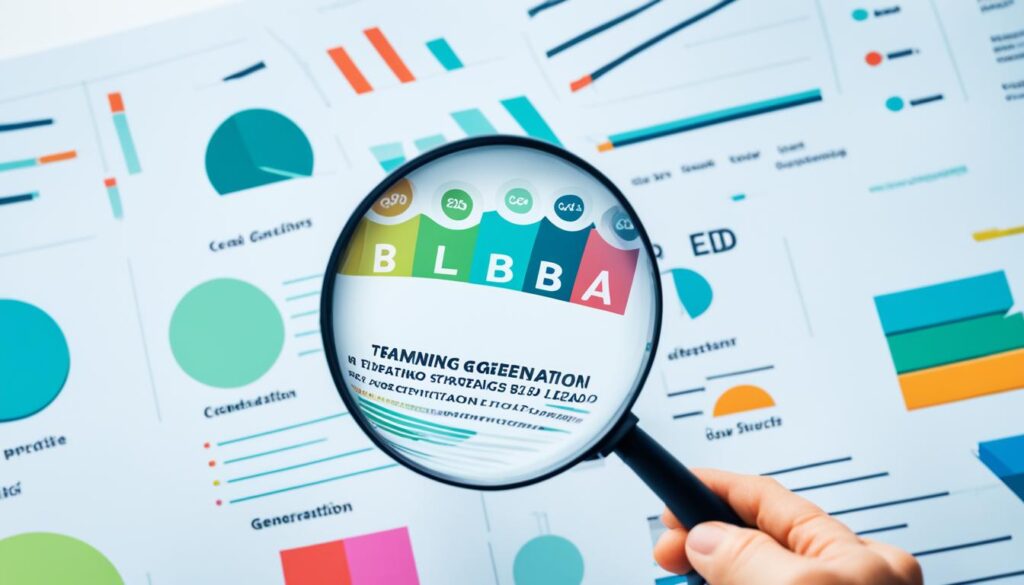
Table: Key Steps for Evaluating and Evolving Your Lead Generation Strategy
| Steps | Description |
|---|---|
| Review your strategic assessment | Compare your initial strategy to the current state of your lead generation efforts and identify areas for improvement. |
| Analyze campaign performance | Evaluate the performance of your lead generation campaigns using key metrics to determine which tactics are most effective. |
| Gather feedback from your team | Engage your marketing and sales teams to gather insights and perspectives on the effectiveness of your strategy. |
| Seek customer feedback | Reach out to your existing customers and leads to gather feedback on their experiences and suggestions for improvement. |
| Stay up to date with industry trends | Continuously monitor industry trends and best practices to ensure your strategy remains effective and aligned with the latest developments. |
Conclusion
Building a strong B2B lead generation strategy requires careful planning, consistent effort, and a focus on providing value to your target audience. By following this checklist, you can maximize your success in acquiring new B2B leads and customers.
Start by identifying your target audience and understanding their problems and pain points. Develop a strong value proposition that highlights how your solution can solve their business issues. Optimize your website to ensure it is mobile-responsive and user-friendly, making it easy for potential customers to find you.
Utilize email marketing to build and segment email lists, and develop personalized email campaigns that provide value and engage with potential customers. Leverage social media platforms, particularly LinkedIn, to network and generate leads. Host webinars and online events to showcase your expertise and capture leads through registration.
Network and attend industry conferences and events to connect with potential customers and establish partnerships. Continually measure and track the results of your lead generation campaigns, using metrics such as email clicks and sales conversions to evaluate their effectiveness. Qualify and nurture leads using lead capture forms and lead nurturing techniques, and constantly evaluate and evolve your strategy to optimize your growth goals.
FAQ
How can I identify my target audience?
To identify your target audience, you need to research their industry, company size, location, and decision-maker roles.
Why is it important to develop a strong value proposition?
A strong value proposition highlights how your solution aligns with your target market’s business issues, making it more appealing to prospects.
How can I optimize my website for lead generation?
You can optimize your website by ensuring it is mobile-responsive, user-friendly, and implementing SEO strategies to enhance your online visibility.
What strategies can I use for email marketing?
You can build and segment email lists to target specific audiences and develop personalized email campaigns that provide value and engage potential customers.
How can I leverage social media marketing for lead generation?
You can utilize social media platforms, particularly LinkedIn, to network and generate leads. Sharing industry-relevant content showcasing your expertise and insights can help attract potential customers.
How can hosting webinars and online events help with lead generation?
Hosting webinars and online events allows you to share your expertise and industry insights. By including registration, you can capture leads and continue engaging with potential customers.
What can I do to network and attend conferences and events for lead generation?
Networking and establishing partnerships with others in your industry is valuable. Attending industry conferences and events provides opportunities to connect with potential customers. Implementing referral programs can also help expand your reach.
How can I measure and track the results of my lead generation campaigns?
You can evaluate metrics such as email clicks, social media shares, and sales conversions to determine the effectiveness of your strategies and measure the results of your lead generation campaigns.
How can I qualify and nurture leads?
Assessing engagement and interest can help qualify leads. Using lead capture forms and implementing lead nurturing techniques can help move leads through the sales funnel.
How should I evaluate and evolve my lead generation strategy?
Continually evaluating your lead generation strategy allows you to identify areas for improvement. Based on the results, you can adjust your strategy and evolve your marketing and sales processes to achieve your growth goals.
Natali – Editor in Chief (Strategy and Mastery, AI Expert) Natali, our Editor in Chief, is the driving force behind our content’s strategic direction. With a keen eye for detail and a deep understanding of market trends, Natali ensures that our content is top-notch and strategically aligned with our client’s goals. Her expertise in AI helps to seamlessly integrate advanced technology into our marketing strategies, pushing the boundaries of conventional marketing.
-

 Email Warmup2 weeks ago
Email Warmup2 weeks agoWarm Follow-Up Email
-

 Email Design Hub3 weeks ago
Email Design Hub3 weeks ago3 Essential Tools for Email Marketing Design Success
-

 Email Marketing3 days ago
Email Marketing3 days agoWhat Is Email Marketing Advantages and Disadvantages
-

 Email Marketing5 days ago
Email Marketing5 days agoWhy Email Marketing Is Effective
-

 Email Template3 days ago
Email Template3 days agoCrafting the Perfect Book Club Invitation Email Template
-

 Email Marketing4 days ago
Email Marketing4 days agoDoes Email Marketing Work in 2024
-

 Search Engine Optimization2 days ago
Search Engine Optimization2 days agoSEO Checklist: Enhance Your Site’s Performance
-

 Marketing Strategy4 days ago
Marketing Strategy4 days agoMonitor Company Chatter Online with Ease









